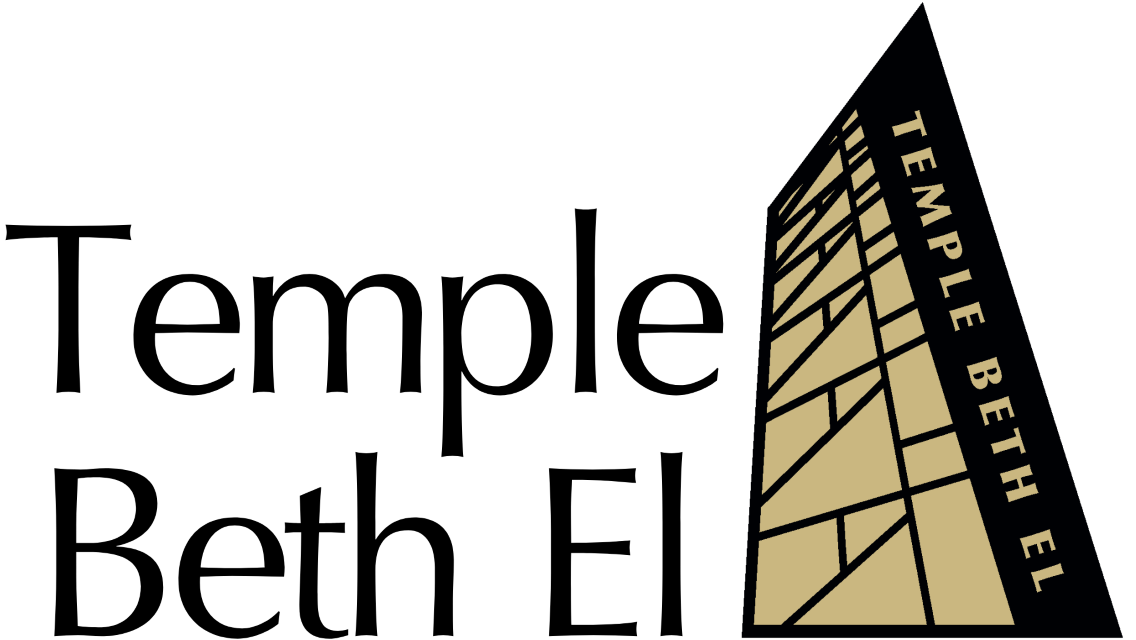Our History
1913-1918
A Congregation is Born: Humble Roots
In the summer of 1912, a small group of liberal- and civic-minded Jews met together to organize the first Conservative synagogue in Western Massachusetts. They arranged for impromptu High Holy Day services to be conducted by Jewish Theological Seminary student Murray Alsted. The enthusiastic success of this first effort led to the formal organization of Congregation Beth El in 1913. The congregation elected its first Board of Trustees, and their first task was to secure the services of a permanent Rabbi. They selected Rabbi Samuel Price of Newark, New Jersey, who was officially installed as Rabbi and Cantor of Congregation Beth El on September 1, 1913. Notably, Rabbi Price served the congregation for 33 years as Rabbi, and another 16 years as Rabbi Emeritus.
For the first five years, Congregation Beth El held services in a number of locations in the North End of Springfield, with High Holiday services conducted at the Springfield Municipal Auditorium (now Springfield Symphony Hall). In 1915, the congregation established a cemetery, and in 1916 the congregation raised nearly $38,000 over two weeks towards building a synagogue on Sargeant Street. With the outbreak of World War I and the movement of Springfield’s Jewish population, the plans were revised. The first permanent home for the congregation was purchased in 1918 at 150 Fort Pleasant Avenue in the Forest Park section of Springfield. Rabbi Price officiated at the dedication of the building in a week of festivities December 1 – 8, 1918. A religious school was founded, staffed by volunteers and one hired Hebrew teacher.

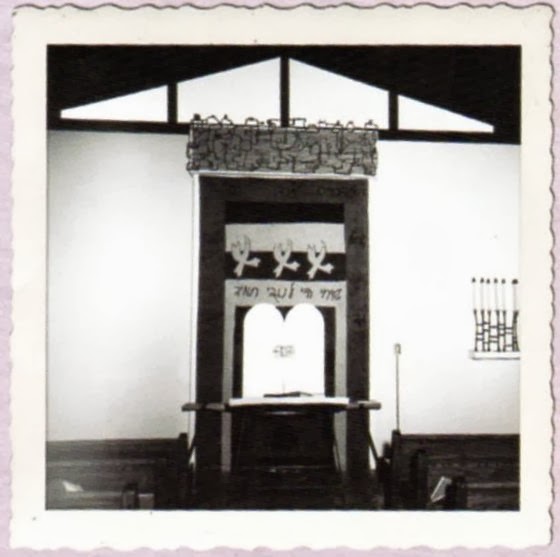
1919-1965
A Congregation Grows Up: Developing Identity and Strength
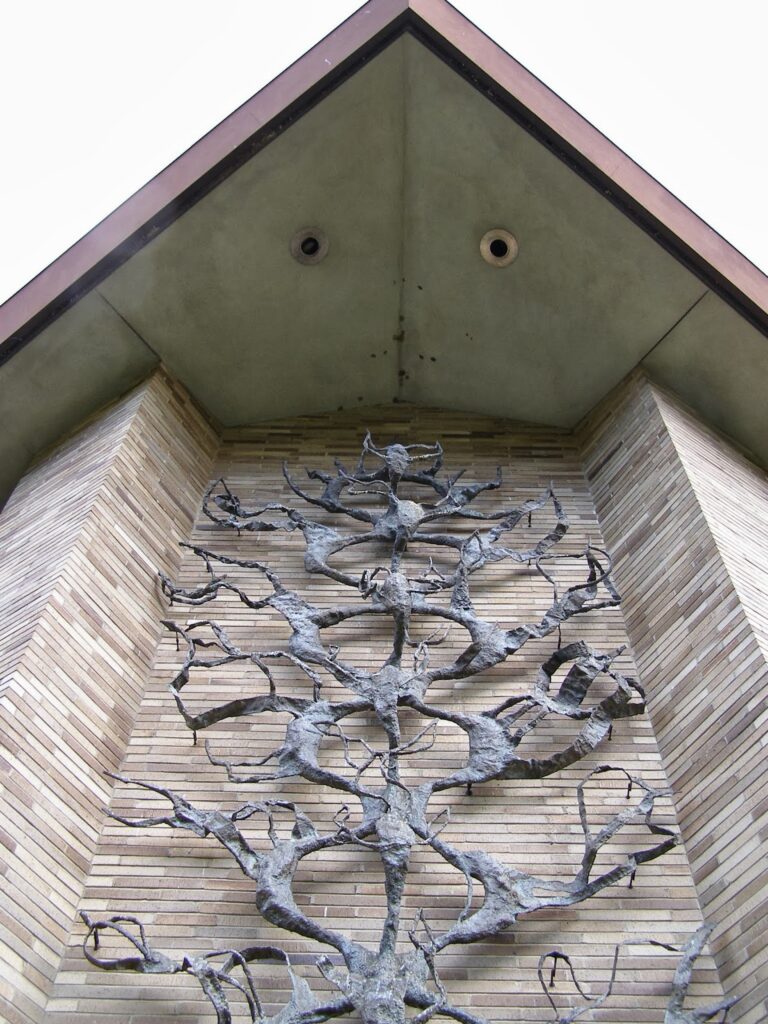
The next 30 years saw tremendous growth in the congregation. The building underwent several expansions to accommodate classrooms and refurbish the interior of the sanctuary. In 1930, the Forest Park Hebrew School started at Beth El in the newly-added classrooms, and was open to the public. Because of its growing needs, in 1939 the congregation engaged the services of Rabbi Sidney Nathanson as Associate Rabbi. In 1942, the synagogue’s mortgage of Beth El Temple was burned in a public ceremony, and in 1943 the 30th anniversary of Rabbi Price’s tenure was celebrated.
In the mid-1940s, a movement arose within the congregation in opposition to Beth El’s Conservative affiliation and practice. The suggestion was made that Beth El join Sinai Temple as a Reform congregation. A congregational survey ultimately confirmed the membership’s desire to remain a Conservative congregation. At the same time, 1941 saw the founding of Springfield’s United Hebrew School, to educate Jewish youth of all denominations, including Conservative, Orthodox and Reform.
With the end of World War II and the “baby boom” well underway, Congregation Beth El continued to grow at an accelerated pace, outgrowing its Fort Pleasant Avenue building. A Building Committee was formed, and Percival Goodman was selected as architect for a new synagogue, to be built on a 10-acre tract of land on Dickinson Street. With enormous congregational support, Rabbi Price broke ground for the new building on June 11, 1952. The sanctuary would house a magnificent organ, funded by the Brotherhood, and a state-of-the-art kosher kitchen, furnished by the Sisterhood. On September 28, 1952, erev Yom Kippur, the cornerstone for the new temple was laid by Henry Lasker, the Congregation’s first President. The new Temple Beth El was dedicated on August 15, 1953 (Elul 5, 5713).
Throughout the 1950s and 1960s, Temple Beth El was a hub of activity for people of all ages within the Jewish community. In 1955, Cantor Morton Shames joined Temple Beth El; Rabbi Samuel Dresner arrived in 1956. Rabbi Dresner’s scholarly sermons and Cantor Shames’ soaring music ensured that Friday night services of this era were well-attended. They were followed by an elegant Oneg Shabbat in the social lounge, at which grown-ups conversed over tea poured from silver urns, and youngsters ate cookies off silver trays and enjoyed Israeli dancing.
By 1955, membership had risen to 530 families. Regular holiday dances and bazaars were hosted by the Sisterhood. The Brotherhood, under the direction of Cantor Morton Shames, put on many musical shows. Beth El sponsored a Brownie Troop, Girl Scouts, Cub Scouts, Boy Scouts Troop 32 and Air Squadron. The 50th Anniversary Golden Jubilee Dinner was held in December 1963. The guest speaker was Dr. Abraham Heschel of the Jewish Theological Seminary, leader of the Conservative Movement. The congregation felt optimistic and secure in its future, and plans began for further expansion.

1965-2006
A Congregation Matures: Facing the External World
Tragedy struck Temple Beth El on October 16, 1965, when a fire destroyed the Sanctuary and the Auditorium. An emergency meeting of the Board was held the next day, attended by men who wept shamelessly over the loss of their beloved building. They voted immediately to rebuild under the leadership of Simon Katz and Dr. Leon Kruger. The Jewish and non-Jewish community responded overwhelmingly with offers of aid and donations. Shabbat services were held in the Jewish Community Center, and High Holiday services returned to the Springfield Municipal Auditorium.
A groundbreaking ceremony was held on September 18, 1966, and the new cornerstone was laid on October 1, 1967. The new sanctuary and auditorium were rededicated in a ceremony on May 12, 1968.
The 1960s and 1970s witnessed many changes in society, especially around issues of race, women’s roles, and religious tolerance. Numerous workshops and conferences were held for the membership about social issues of inter-racial and inter-religious matters. The Social Action Committee was formed to convene discussions and meetings with area churches and the Urban League regarding race, religion, and shared concerns regarding the separation of church and state. The women in the congregation continued to advocate for greater roles in ritual and lay leadership.
The congregation became increasingly aware of the needs of Jews outside America. Prominent speakers were invited to discuss the conditions and needs of Jews in Israel and the Soviet Union. These included Major General Chaim Herzog (the first Jewish Military Governor of the West Bank and Jerusalem), Theodore Bikel, Senator Henry “Scoop” Jackson, and Presidential candidate Paul Tsongas. In response to war in Israel, 1973 witnessed many rallies of support for Israel through bond sales. USY raised funds for an ambulance. In 1975, in solidarity with Israel, the congregation adopted Sephardic pronunciation in services, replacing the Ashkenazic pronunciation. In the 1980s the congregation continued its support of Soviet Jewry with a fundraising concert by Mary Travers at Symphony Hall.
Temple Beth El celebrated its 75th Anniversary Diamond Jubilee in 1988. Membership included over 900 member families. Jews were accepted in institutions throughout the area, including civic boards, secular charities, hospital staffs, country clubs and business associations. The synagogue gradually became less central as a site for social community gatherings, but maintained its importance in people’s lives as a source of spiritual and ethical guidance, and a place of education for future generations.
Under the spiritual leadership of Rabbi Herbert Schwartz, installed as Rabbi in 1983, there was increasing emphasis on tikkun olam. Members volunteered to feed the hungry and homeless at Loaves and Fishes, and volunteered in local nursing homes through Project Ezra, allowing Christian staff time off for their holidays. Congregants donated truckloads of household goods and clothing to help new immigrants from Somalia, Ethiopia and the former Soviet Union settle in the area. For more than 20 years, the synagogue youth sent care packages and Purim gifts to Jewish soldiers serving in the American armed services and in the Israeli Defense Force.
The 1990s saw the congregation thinking again about its future. In 1990, the 21st Century Endowment fund was established to modernize the facilities. With an eye to future generations, the community invested in the synagogue’s security and stability. In 1998, the congregation launched its first Strategic Planning Process.
Family education thrived, with programs that emphasized Jewish values, home practices, and intergenerational learning. The Temple Beth El Learning Center was established in September 1995 as a living symbol of the synagogue’s dedication to lifelong learning. The congregation dedicated the year 1997 (5757) to the Pathways to Torah Project, which involved study of text by each family. The writing of a new Sefer Torah scroll for Temple Beth El was completed on September 14, 1997. The year 5757 culminated in the dedication of newly created Torah covers, mantles and ark valence.
In 1999, the Learning Center was re-dedicated in memory of the late Sandi Kupperman, a beloved teacher, through the generosity of her parents, Charlie and Jan Nirenberg. In 2000, the library was re-dedicated in honor of Maurice Katz, through the generous support of his family. In its first decade, the Sandi Kupperman Learning Center was recognized as a “Framework for Excellence School.” The following year, the Katz Family Library received the Solomon Schechter Award as one of the finest synagogue libraries in the Conservative Movement.
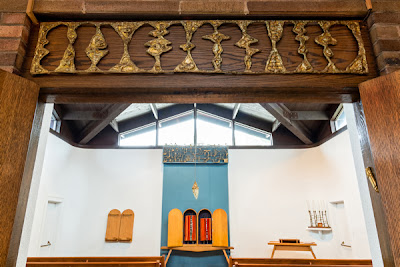
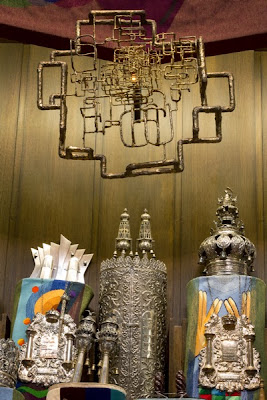
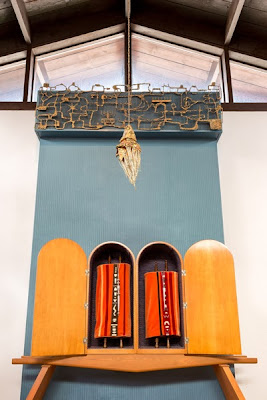
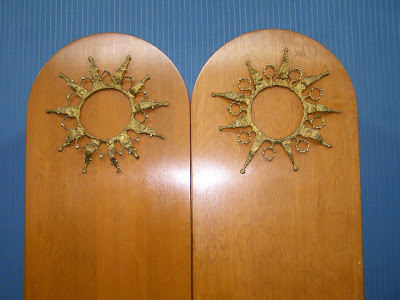
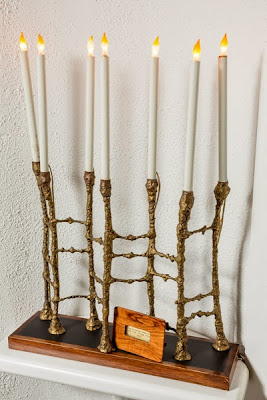
2007 – 2013
A Congregation Evolves: Preparing for the Next Century
As the 21st century began, the demographics of the region continued to change. Springfield was losing population as manufacturing diminished, causing a decline in the number of Jewish families and Jewish businesses. All area synagogues experienced a loss of members. The leaders of Temple Beth El and Congregation B’nai Jacob, the other Conservative congregation in Longmeadow, began discussions about merging. Concurrently, three area Orthodox congregations were also discussing a merger and the potential purchase of the B’nai Jacob building.
Combined programming helped introduce the two congregations to each other. In 2007, a joint Rabbi Search Committee was formed. The committee together selected Rabbi Amy Wallk Katz to succeed Rabbi Herbert Schwartz, who retired after a 25-year tenure. Rabbi Katz began August 1, 2008, and Congregation B’nai Jacob and Temple Beth El joined together in September.
On May 1, 2009, Rabbi Katz was formally installed as Rabbi of Temple Beth El. Rabbi Katz embraced the traditions of both synagogues as she led the united congregation. She was the first female Rabbi to lead a synagogue in greater Springfield.
Planning for the future has been a major focus of the last five years. The Centennial Capital Campaign has raised over $3 million to provide endowment income as well as funds for capital improvements. In 2012, the Board of Temple Beth El made a historic decision to establish a cemetery section for interfaith burial. Two community-wide programs supported by the Jewish Federation of Western Massachusetts and the Harold Grinspoon Foundation also help secure our future. The “Try a Synagogue” program identified unaffiliated Jews in the community, and encouraged them to experience all three area synagogues, representing Conservative, Orthodox, and Reform Movements, through trial memberships. The “Create a Jewish Legacy” program helped organizations like Temple Beth El hold conversations with their loyal members about after-lifetime gifts. More than 60 Temple Beth El members have made legacy commitments that will ensure our future for generations.
2014 – Present
At the end of 2014, the decision was made to name our magnificent sanctuary in honor of our beloved Cantor Morton Shames, who was ordained in the first class from the Cantors Institute of the Jewish Theological Seminary in 1955, and spent his entire career with Temple Beth El. The dedication was held in June 2019.
While TBE’s social hall had recently been renovated with new lighting, carpeting, and painting, the limitations of our sanctuary had been challenging over recent years. It was built at a time when buildings and spaces were rarely handicapped accessible, and it was not designed to be flexible for smaller gatherings. Our Architecture and Design Committee, under the leadership of Susan Firestone and Howard Smithline, was given the job of selecting an architect who could redesign our sanctuary. After a detailed search, in 2014 TBE hired architect Preston Scott Cohen, a professor at Harvard University, whose firm is renowned for the award-winning design of cultural institutions to assess our beautiful sanctuary and envision how it could be reconfigured to be more comfortable, flexible for both large and small crowds, and accessible.
After many months of meetings with the congregation and stakeholders, and reviewing initial plans, a design was chosen that would not only preserve but enhance the beauty of the sanctuary while solving the problems including space, accessibility, and acoustics. The architect was sensitive of Percival Goodman’s iconic design that our congregation loved.
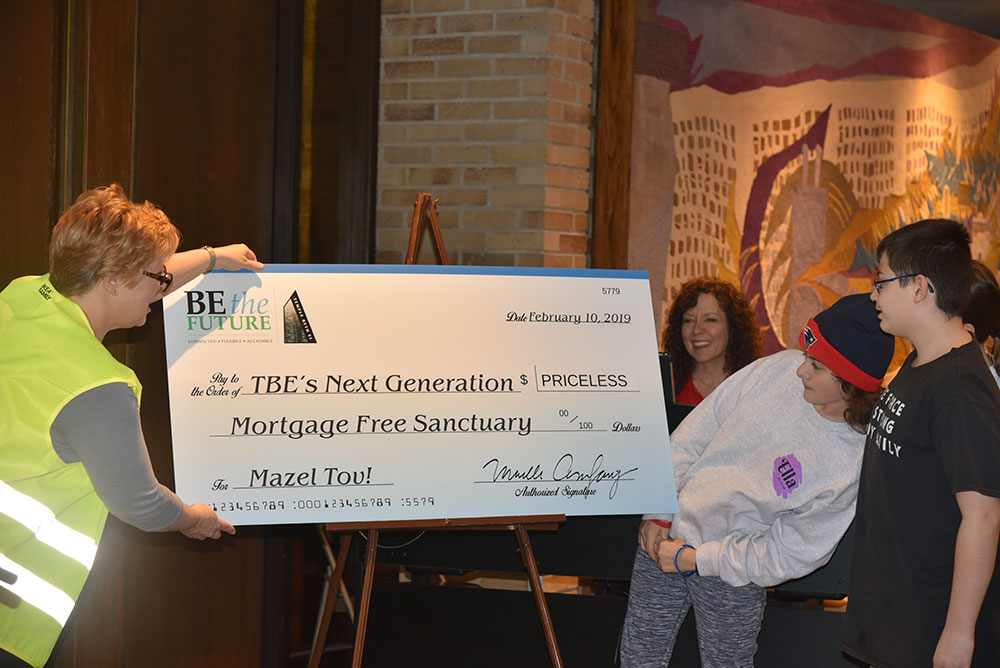
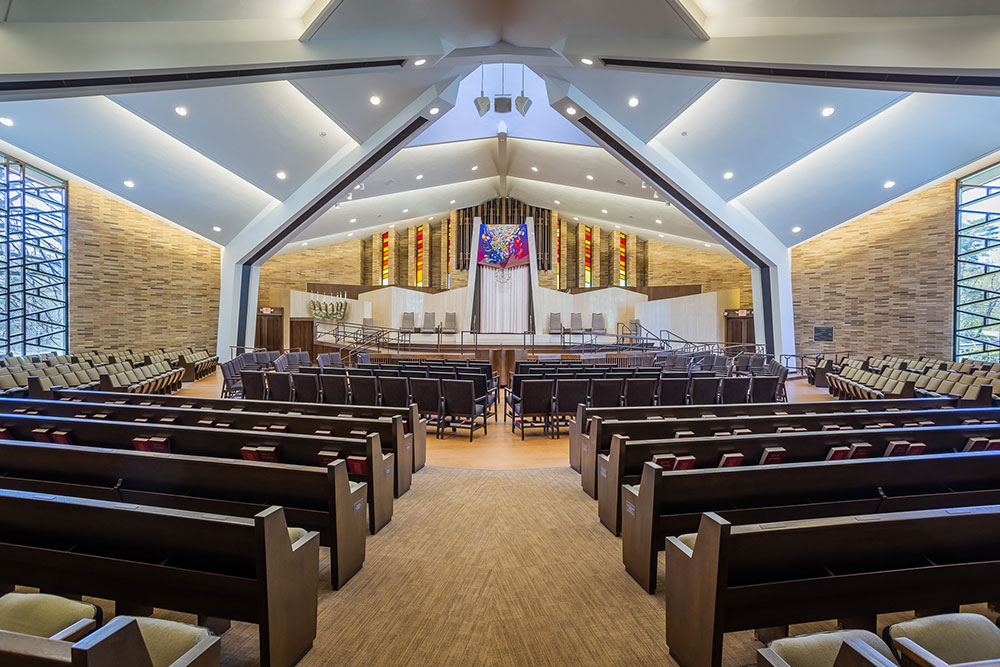
The “BE the Future Campaign” was launched in 2015 to raise $2 million to pay for the sanctuary renovation and to pay off the mortgage. The committee, chaired by Michelle Anfang, had raised $1 million towards the goal of $2 million by the middle of 2016. The renovation began in early 2019, and a celebration of the completion of the sanctuary renovation was planned for March 14, 2020. Unfortunately, the coronavirus pandemic forced the shutdown of TBE (and most of the world) right before this date. TBE pivoted immediately to Zoom and livestream services, and offered a full array of online programming to keep everyone entertained when people were stuck at home. During the warmer months, clergy offered in-person services outside in the parking lot, with social distancing. Shortly thereafter, the clergy began conducting services in the renovated sanctuary via livestream. Finally, in 2021, the sanctuary was open to congregants for Shabbat morning services. The Covid Task Force was established to determine, based on the current rates of COVID-19 in the community, whether services and programs could be held in person or not. Many events had to be cancelled, postponed, or moved online during periods with high rates of infections.
In 2017, Bill and Lynn Foggle established the Great Issues Lecture Series, an annual event that brings speakers to TBE who address the important issues of our day. Thanks to their generosity, it will be held in perpetuity.
Over the years, TBE and Sinai Temple, the Reform synagogue down the street, began collaborating with several joint services each year. In the fall of 2022, B’Yachad, a joint Hebrew School was established, with classes meeting at Sinai Temple for half the year and at TBE half the year.
In August 2022, a special Crystal Concert Celebration was held to celebrate and honor Rabbi Amy Wallk’s 15 years at TBE. The evening included a concert by famed Cantor Magda Fishman, a festive cocktail reception and dessert buffet. This was also a very successful fundraiser; more than $100,000 was raised in Rabbi Wallk’s honor to support TBE in the years to come.
